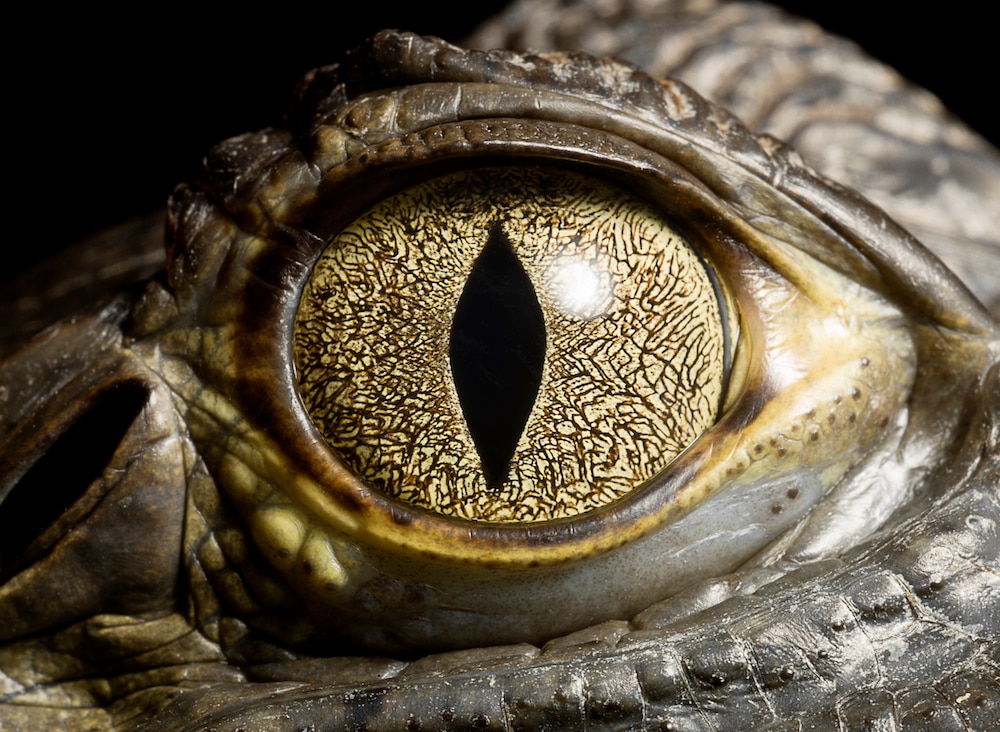Create a free profile to get unlimited access to exclusive videos, sweepstakes, and more!
Monster crocs in Canada? They lurked that far north 97 million years ago
You didn't expect that, eh?

Crocodiles are usually found in warm, often humid climates, reptilian eyes just above the water and on the lookout for prey in murky waters. So what were they doing in Canada during the Cretaceous period?
Crikey. The crocs that terrorized the northeast region of what is now Tumbler Ridge in British Columbia were not just seemingly out of place (maybe not so much if there were actual dinosaurs in the north at that time), but enormous. They could reach 36 feet in length and were most likely ambush predators in tropical forests that have long since frozen over. These crocodilians were the ancestors of later Cretaceous beasts like Deinosuchus, which is thought to have been able to devour dinosaurs that came too close to the water’s edge.
It might be hard to believe that Canada was once much warmer — and Alberta, which is just east of British Columbia, was once the bottom of a sprawling inland sea. Suddenly the thought of crocodiles sneaking around there makes sense. Researchers Guy Plint, Charles Helm, and Martin Lockley, who coauthored a study recently published in Hisotrical Biology, were able to find out how huge these things were from trace fossils they left behind. Just claw imprints are enough to give an idea of length and body weights, as well as whether they walked or swam.
“These scratch marks must have been made by crocodiles swimming in a shallow lake, scratching their claws over the bottom as they punted themselves along.,” Plint told SYFY WIRE. “The dry floodplain must have become inundated, allowing the crocs [to swim] around.”
Plint is a sedimentologist who was most intrigued by what evidence of flooding and emergence he could unearth from ancient rocks. Fossilized sediment preserved not only swim traces from the crocodiles, but footprints from dinosaurs such as ankylosaurs and ornithopods, in so much detail that outlines of the scales on the bottoms of their feet were actually visible. There were many layers of rock that indicated when there was water. Mud that dinosaurs and other creatures trudged through, possibly in a shallow lake, turned into mudstone, and fossilized plant roots that turned up were the remains of plant life growing on the bottom of that lake.
Footprints on the top of the mud layer suggested that the lake had evaporated into hard, dry ground. The prints were not deep enough to sink into something like mud. After it was walked over, that surface was immersed in and eroded by water again during a seasonal flood. It was during this phase that the crocodile scratches were forever embedded in the future rock. Scale imprints mean that the mud this time around was much firmer than the sludge it was before.
“Among living crocodilians, spacing between the claws relates to overall body length,” said Plint. “By measuring the spacing of the claw scratch-marks made in the firm mud of a shallow lake bed, we were able to extrapolate the possible body size of the Cretaceous crocodylians.”
What they actually looked like can really only be imagined right now. These crocs probably had massive jaws like their relatives Deinosuchus and Confractosuchus, and if the banana-sized teeth of Deinosuchus are any indication, its predecessors probably had mouthfuls of knives suited for tearing through flesh. Without bones, their features cannot be reconstructed, but what could be dredged out of the swamp has proven there really were crocodiles in Canada, and that they are 13 million years older than the second oldest known crocodilian fossils.
While there is no direct evidence to prove that these crocodiles sank their teeth into dinosaurs, it is possible if successors Deinosuchus and Confractosuchus had a taste for them, and the carnivores aren’t ruled out. Extant crocodiles are capable of a death roll that their Canadian brethren could have used to take down monsters. Plint had previously found huge theropod tracks in rocks just as ancient as those with scratches from crocodile feet. It is possible that one of them might have leaned over for a drink at a really unfortunate moment.
“It is not hard to imagine these huge crocs being the top predators in this environment,” he said. “We now wonder whether the most common predator of dinosaurs was a beast that lurked in the murky waters of shallow floodplain lakes and abandoned channels.”


























